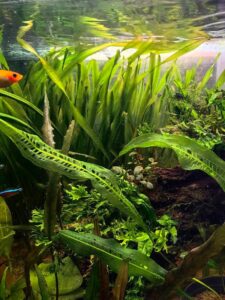How to Propagate Aponogeton madagascariensis

Propagating the Madagascar Lace Plant: A Guide to Aponogeton madagascariensis
Introduction:
Aponogeton madagascariensis, commonly known as the Madagascar Lace Plant, is a captivating aquatic plant prized for its unique, delicately textured leaves. Its striking appearance, resembling intricate lacework, makes it a highly sought-after addition to aquariums and water gardens. This relatively easy-to-care-for plant, however, presents some interesting challenges when it comes to propagation. While its popularity among aquatic plant enthusiasts is undeniable, its propagation methods require a deeper understanding of its specific needs. The rewards, though, are a vibrant and visually stunning plant that can become a centerpiece in any aquatic environment.
Seed Germination:
Currently, there are no known reliable methods for seed germination propagation of Aponogeton madagascariensis. While the plant does produce seeds, their viability and germination rates are extremely low, rendering this method impractical for most hobbyists. Further research into specific germination requirements might be fruitful, but currently, this is not a viable propagation technique.
Cuttings:
Currently, there are no known reliable methods for propagating Aponogeton madagascariensis from cuttings. The plant does not readily regenerate from stem or leaf cuttings like some other aquatic species. Attempts at propagation through cuttings generally fail.
Division:
This is the most successful and commonly applied method for propagating Aponogeton madagascariensis.
Challenges: Division requires a mature, well-established plant with multiple rhizomes. Improper division can severely damage or kill the parent plant. Divisions must be large enough to include sufficient rhizome material and healthy leaf growth for successful establishment.
Practical Tips: Divide the rhizome during its active growing period, using a sharp, clean knife or scissors to separate sections with several leaves and roots attached to each. Plant each division in a suitable substrate in a well-lit aquarium or water garden, ensuring adequate nutrient levels. Handle the rhizome gently to avoid damage.
Rewards: Division allows for the relatively quick propagation of multiple plants from a single parent, preserving its desirable characteristics. It’s a relatively simple technique once you’ve mastered the correct approach.
Tissue Culture:
Tissue culture offers the potential for large-scale propagation of Aponogeton madagascariensis, overcoming the limitations of other methods.
Challenges: Tissue culture requires specialized equipment, sterile conditions, and a good understanding of plant tissue culture techniques. This method is generally more expensive and complex, requiring significant expertise and investment.
Practical Tips: This method requires access to a laboratory with appropriate equipment and aseptic conditions. Explant selection, media preparation, and carefully controlled environmental conditions are crucial for success.
Rewards: Tissue culture allows for the propagation of numerous plants from a single small piece of plant tissue, enabling mass production and the preservation of superior genetic lines. It’s especially effective for disease-free propagation and maintaining genetic uniformity.
Conclusion:
Propagating Aponogeton madagascariensis presents unique challenges, with rhizome division proving to be the most reliable method for the average hobbyist. While seed germination and cuttings currently appear infeasible, tissue culture offers a potential pathway for large-scale propagation, albeit with its associated complexities and costs. The rewards of successfully propagating this beautiful plant, however, far outweigh the difficulties. The patience, meticulous care, and eventual success in cultivating this intricate aquatic treasure provide a profound sense of satisfaction. For aspiring propagators, focus your energies on mastering the rhizome division method – with practice and careful attention, you can enjoy the beauty of multiple Madagascar Lace Plants gracing your aquatic environment.